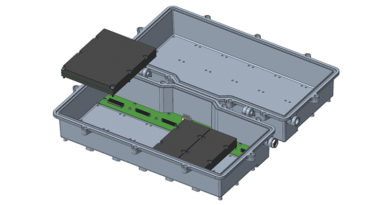Reflections on Automation in Testing
By Ray Thomas
In the Summer 2017 issue of Broadband Library, Ron Hranac wrote about the “wise and mighty decibel.” That wasn’t the first time he has written about this important concept and it won’t be the last. I called Ron to compliment him on his explanation of decibels and it led to a discussion of how well cable technicians truly understand this key metric. We asked each other the following question… As test equipment has gotten “smarter” through the addition of automated measurement routines, does the flip side of the coin mean that techs’ understanding of basic electronics theory is being negatively affected? An executive at a large search engine company has speculated in public that the ability to search online for easy answers to life’s questions was dumbing people down.
This isn’t to say that automated test measurements aren’t a wonderful thing to have. They greatly speed up a technician’s work and accuracy of measurements in customers’ homes and in the cable plant and headends. When Hewlett-Packard developed automated test routines for FCC Proof-of-Performance measurements on their 8591C spectrum analyzer, that instrument quickly became the “go to” piece of equipment for systems that were required to conduct system tests. However, techs that didn’t fully understand the underlying measurement theory sometimes ran into difficulties trying to run the automated tests. To give a simple example, if the strength of the RF signal into the spectrum analyzer was below a minimum level, test results were not valid, but not everyone knew that. HP sold many 8591C analyzers to the cable industry before they ended that product. I’ve seen 8591Cs in nearly every cable headend and manufacturer’s test lab I’ve been to across the U.S. and in other countries over the years.
The polar opposite of having automated measurement capability would be the Jerrold 704 field strength meter. Graham Stubbs penned an excellent article about the venerable 704 that was published in 2004. It’s important to keep in mind that at the time the 704 was created, it was new and innovative. As Graham stated, “the 704 became the workhorse of the industry.” In fact, the Loyal Order of the 704, a group of cable old timers that meets at Cable-Tec Expo each year, gets its name from the 704 field strength meter. The point of mentioning the 704 here is that the person using it couldn’t push a button and walk away for a cup of coffee while the measurements made themselves. The tech/engineer using the 704 needed a good understanding of theory to make valid measurements. On a side note, if you have never seen or touched a 704 meter (manufactured from 1953 until 1967) you might stop by the Loyal Order of the 704 meeting at Cable-Tec Expo and persuade one of the LO 704 members to show you one.
Not all situations lend themselves to automated testing. A favorite memory from field testing goes back to when I joined Time Warner Cable’s corporate engineering group in Denver. One of my first projects was to go into several of TWC’s divisions and conduct testing that simulated soon-to-be-launched cable modem services in our divisions. Although the major manufacturers had created sophisticated test systems in their labs and shown that cable modems and CMTSs would work, there was still some doubt about how well they would work under field conditions in actual cable plant. In particular, the performance of Fabry-Perot reverse laser transmitters was being questioned. A solid background in electronics helped in structuring the tests. Willingness to ask many questions and work in a team with others was also crucial. Engineers from major vendors that had already learned much about BER testing were outstanding in sharing their knowledge about BER dynamic range measurements. But adapting that testing to field situations was a challenge. We succeeded, but data collection was done manually in a tedious and slow fashion. That was one time when having fully automated testing and a giant red Easy Button to make it happen would have been hugely appreciated. And it wouldn’t have felt dumbed down at all.
 Ray Thomas
Ray Thomas
Owner, Kiama Tech, LLC
Ray@KiamaTech.com
Ray worked at five different cable operators including the corporate engineering groups at Time Warner Cable and Comcast over a 30-year period in a wide range of roles. He is currently an author and consultant at Kiama Tech, LLC.
Credit: Cartoonstock.com



